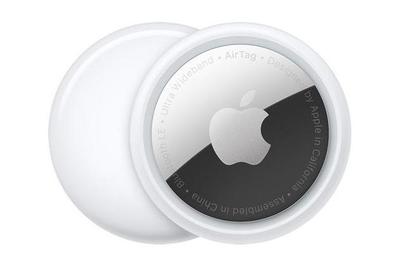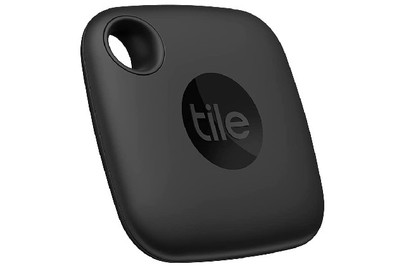Air travel has become pure chaos, and there’s no sign it will get better anytime soon. Wildly high flight prices, endless delays, and outright cancellations have made flying more stressful than ever, especially heading into the holidays. But, thankfully, there’s at least one way to take some control amid the chaos.
Try keeping tabs on your luggage with a Bluetooth tracker. That way, you can see where your suitcase is throughout your trip—even if the airline loses your bag and can’t track it down.
No one wants to be the person standing forlornly at baggage claim waiting for a suitcase that never arrives. It’s one of the reasons I avoid checking a bag, if I can help it. But if I’m forced to gate-check my carry-on, or if I’m traveling for longer than a week and need to check larger luggage, I want to be prepared for the worst. Bluetooth trackers (which were briefly banned and then unbanned by Lufthansa) offer some peace of mind—and, yes, Apple’s AirTag is the best one.
The Bluetooth trackers we recommend
Apple AirTag
AirTags leverage Apple’s huge network of devices to track down a lost suitcase, and they’re impressively accurate in pinpointing an item’s precise location.
Tile Mate (2022)
The Tile Mate has a long range and is quite loud. With this tracker, you have a better chance of finding your lost stuff than with the other Android-compatible Bluetooth trackers we’ve tested.
My flight test of the Apple AirTag and Tile Mate
Apple’s AirTag is our pick for the best Bluetooth tracker for iPhones. AirTags don’t work with Android devices, so the Tile Mate is our pick for Android users. Tile devices are compatible with both iOS and Android. So you can install the Tile app on your iPhone or Android device to connect a Tile tracker to your phone and track down your stuff. iPhone owners should stick with AirTags, though, because they really are better in just about every way, from ease of setup to location accuracy.
I tested each one on a recent cross-country flight from New York City to Los Angeles, strapping an AirTag to my suitcase handle and tucking a Tile Mate inside. I then checked my Away bag and let American Airlines take over.

The good news: Both trackers sent me notifications via my iPhone when my suitcase was no longer within Bluetooth range, as I made my way from the airline bag drop-off to the TSA pre-check line. And both the AirTag and the Tile Mate (eventually) detected when my suitcase landed at LAX.
But Apple’s Find My app for iPhones tracked my AirTag’s location almost in real time—I checked the app as soon as I landed in Los Angeles, and it almost instantly showed that my suitcase was at LAX. Tile’s location tracking left something to be desired, but the Tile app did detect that my Tile Mate ended up in Los Angeles … just several miles from the airport. (After about 15 minutes, the Tile app reflected my bag’s actual location at Terminal 5.)
Why Apple AirTags are so effective
The main reason AirTags are such effective location trackers—and why an iPhone user should choose them over a Tile device, especially when traveling internationally—is because AirTags leverage Apple’s extensive Find My network, which has far more users than the Tile network.
Apple says that close to 1 billion Apple devices—including everything from iPhones to MacBooks to iPads—are opted in to its Find My network. Those devices are passively pinging the network and each other in the background, and they can be found when they’re not connected to the internet or when they’re powered off. As soon as your missing AirTag comes within Bluetooth range of one of those devices, like someone’s iPhone at the airport, that iPhone pings the Find My network that an AirTag is in range. Find My then reports its location to you, the AirTag owner.
All you really need to know is that because there are so many iPhones in the world, if you are separated from your AirTag, the odds are pretty good that one is close enough to help track down your AirTag. And when you have to report missing luggage to an airline representative, you’ll have some pretty compelling evidence—a map—to point to. A cursory Reddit search turns up a slew of success stories indicating just that.
The takeaway
If you have an iPhone, get an AirTag. But the Tile Mate is the best Android-compatible Bluetooth tracker we’ve tested.
Tile has been in the Bluetooth tracker business for a long time, selling 50 million devices to date. Tile was acquired by Life360 last year, and Life360 users can now opt in to the Tile network, potentially adding another 42 million devices that can report a missing Tile’s location. But the odds that all Tiles ever sold actively use the Tile network are pretty slim, which means Tile’s network is just a fraction of Apple’s.
Both the AirTag and Tile Mate were effective in my testing. They’re simple to set up, easy to report missing, and small enough to slip into any type of checked luggage. You can buy an AirTag luggage loop accessory to slip around your suitcase handle, but I prefer to toss a tracker inside, to reduce the chance of the AirTag’s falling off the suitcase or being taken. But in a more challenging scenario—for instance, an international flight with a harrowingly short layover—I’d be inclined to trust an AirTag to track down my lost suitcase more quickly than a Tile Mate.
Either way, I’m not leaving LAX without a tracker in my bag—air travel is too chaotic these days to leave the fate of your luggage up to chance.
This article was edited by Catherine Kast and Annemarie Conte.






